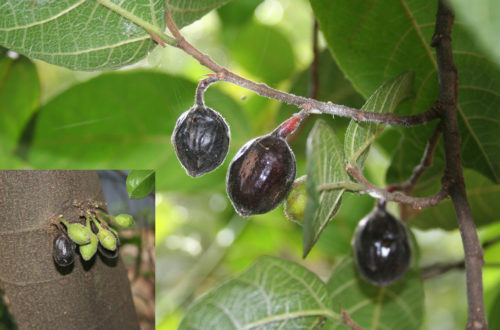Having stood in front of thousands of chefs over the years and asking what are the basic flavours in food, I am struck by the different focus that traditional culinary education has to a scientific approach to cooking. Humans have a natural urge to classify which is why we have first and second names, some have middle names and we can explain where we fit in the network of our immediate and more distant relatives, both living and passed.
Why is it then, that when confronted with a host of ingredients from around the world, we do not attempt to recognize some basic characteristics that fit new foods into our network of familiar ingredients? Instead, chefs need to learn a whole set of rules relating to established cuisines and how food was traditionally prepared, rightly or wrongly. I believe that this difference is why wild foods have struggled to become part of the everyday kitchen and an Australian cuisine is only just starting to emerge after 3 decades of first offering these amazing ingredients to the food industry.
As a scientist rather than a chef, my approach was to look to how we actually taste the flavours in a food and then how these might be applied to a dish where different sources of flavours are combined. I was interested in what made popular dishes irrespective of cultural origin and which tastes, textures, colours and smells made these dishes so accepted.
This chapter addresses these issues so that anyone can learn to create dishes that service our desire for delicious food. Sure, if your palate is dumbed down to only like sweet, salty, fat and stodgy you might have a way to go learning to appreciate more complex and subtle tastes but it can be done. As in business, what we measure gets improved, so in food, hunting flavours gets appreciated.
This chapter also looks at the balance between taste pairs and the different sensitivities that we have for a range of tastes. I do take the liberty of expanding the sense of taste to include the detection of pain, smell and some other non-tastebud experiences from certain ingredients.
Another area of interest to me is how our prehistoric or genetic taste drives rule our behaviours to food. There is a reason that junk foods are popular and why we get fat from letting our unconscious taste drives get to dictate our food intake. There’s even a simple way of changing the less desirable of these instinctive drives by servicing one desire that is not fulfilled because of the quality of our modern foods. I have used this trick to lose over 30kg myself and keep it off for more than 3 years, slowing to a regular loss of a kg or so each year as I drift towards a more healthy body weight. All this without dieting or pretending that I can change what I eat with will power. There is growing evidence that there is no such thing as free will and we tend to choose foods as a result of the chemicals secreted into our bloodstream by the bugs in our gut. If they want more Kentucky Fried for their own nutrition, we have little choice in the first instance. Our best strategy is to change the micro-flora in our gut if we want to get healthy.
I also present evidence in this chapter of the incredible performance enhancement possible through a wild food diet and a particular exercise regime that can be as little as 3 minutes, 3 times a week. There is proof that Indigenous Australians out-performed Olympic record-breaking runners and they did it as a matter of course while out on a hunt. Learn how from this section.
Please give me your feedback in the forums or as a comment below.


